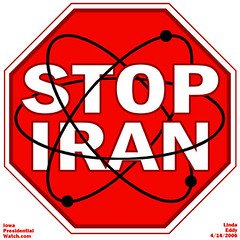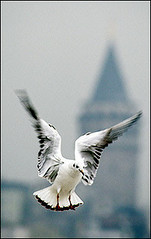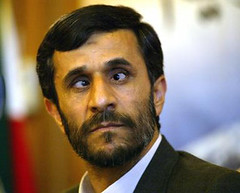
The M777A2 Light Weight 155 mm Howitzer made its debut at Camp Taji, Iraq, Jan. 2. The Soldiers from Battery B "Banditos," 2nd Battalion, 11th Field Artillery Regiment, 2nd Stryker Brigade Combat Team, "Warrior," 25th Infantry Division, Schofield Barracks, Hawaii, first Army unit to field and fire the cannon system in Iraq.
U.S. Army photo by Sgt. 1st Class Christina Bhatti.CAMP TAJI -- The Soldiers from Battery B, “Banditos,” 2nd Battalion, 11th Field Artillery Regiment, 2nd Stryker Brigade Combat Team, “Warrior,” 25th Infantry Division, Schofield Barracks, Hawaii, made history, Jan. 2, when they were the first Army unit to fire the 155 mm M777A2 Light Weight Howitzer into the night sky over Baghdad.
“I’m proud to be part of this,” said San German, Puerto Rico native1st Sgt. Ramon Malave, Battery B first sergeant. “My Soldiers are good and they want to fire this system out here.”
The “Banditos” were the first Army unit to receive this cannon system and have trained for 15 months to perfect their skills.
BAGHDAD – An Apache air weapons team killed four insurgents emplacing an improvised explosive device on a dirt road south of Yusufiyah Jan 6.
An unmanned aerial vehicle initially spotted the individuals emplacing the IED, and then observed them cross a foot bridge and hide in reeds nearby.
The air weapons team from 1st Battalion, 3rd Aviation Regiment, 3rd Combat Aviation Brigade, consisting of two AH-64 Apache helicopters, was called in to engage the insurgents. The pilots were able to identify the targets with the help of the unmanned aerial vehicle.
The Apache helicopters fired a Hellfire missile and 30 mm rounds, killing the IED emplacers.
Coalition Medics Conduct Operation With Iraqi Police
Iraq’s 3rd Brigade, 1st National Police Division, provided security for the event and used its medics to screen patients. “I am very impressed with the skills of the national police medics,” said Army Maj. Anthony Carroll, from Yuma, Ariz., a team leader in 489th Civil Affairs Battalion.
“They took the lead and allowed our medics and doctors to focus on the critical patients.” The operation saw 40 percent more patients arrive for treatment than in previous medical operations held there.
U.S. Troops Mentor Afghan Artillery Platoon
QALAT, Afghanistan, Jan. 9, 2008 – A smiling jester grins down from their ballcaps, but the soldiers who wear them are all business. And when they go looking for a fight in Afghanistan’s Zabul province, the big guns that cover them are no joke either.
Sgt. Roholluh, from the 4th Kandak of the Afghan National Army’s 205th Corps, sights a D-30 howitzer. The howitzer is part of a three-gun battery on forward operating base Wolverine, which supports Afghan National Army and coalition military operations against insurgents in Afghanistan’s southern Zabul province.
Photo by Petty Officer 1st Class David M. Votroubek, USN (Click photo for screen-resolution image);
high-resolution image available.
Formally, they’re known as the 4-2 Embedded Training Team, but they started calling themselves the “Crazy 98s” during training as Embedded Training Team Class 9806 at Fort Riley, Kan. And though the team has an easy demeanor, they’re very serious about their job of training the 4th Kandak of the Afghan National Army’s 205th Corps.
BAGHDAD, Iraq – A terrorist killed during an operation Dec. 25 has been positively identified as Haydar al-Afri.
Haydar al-Afri, also known as Imad Abd al-Karim, was a senior al-Qaeda in Iraq leader for the western region of Mosul, and a close associate of several terrorist senior leaders in northern Iraq. Haydar was involved in facilitating resources and planning attacks against Iraqi and Coalition forces.
Haydar was killed during a Coalition forces operation in Mosul Dec. 25 (see MNF-I press release A071225a, “Coalition forces target terrorist facilitators, suicide bombers; 13 killed, 27 detained,” dated Dec. 25, 2007).
During the operation, Coalition forces were engaged on two separate occasions by armed men as they attempted to clear target buildings in the area. The men charged at the Coalition forces’ position, and the ground force engaged the enemy, killing four terrorists.
The Straits of Hormuz
January 9, 2008
So now the Iranians have denied “buzzing” American warships.
No surprise there; the mullahs always deny any aggressive acts, even when they are caught red-handed. They deny arming, training and guiding terrorists in Iraq, Afghanistan and Lebanon.
They deny EVER carrying out belligerent acts, even though their armed forces, in uniform, attempted to capture American Special Forces in Iraq in September, 2006. And on and on.
The most surprising thing about the Straits of Hormuz event is that anyone is surprised. After all, they’ve been attacking us for nearly 30 years. But that little fact is never mentioned in the deep thinkers’ analyses, at least in public.
Sigh. Once upon a time I used to end my columns on Iran with “Faster, Please.” But I stopped, because it was so clear we weren’t going to do anything serious, faster or slower. We’re relying on our enemies to force us to do the smart thing, which is the pattern of American foreign policy. But it’s a terrible way to run a railroad. (Michael Ledeen)
The US began a new offensive in northern Iraq, pursuing al-Qaeda in Iraq and affiliates even further outward towards the border. Military planners expected to meet some significant resistance, as they had predicted that AQI had found some space to regroup.
Apparently, that level of resistance has not materialized:
The top U.S. commander in northern Iraq said Wednesday a nationwide operation launched against insurgents was meeting less resistance than expected, but that troops would pursue the militants until they were dead or pushed out of the country.
Maj. Gen. Mark P. Hertling told reporters in Baghdad that in his area of control alone, 24,000 American troops, 50,000 members of the Iraq army and 80,000 Iraqi police were taking part in the offensive against al-Qaeda in Iraq.
Diyala province northeast of Baghdad has not seen the same drop in violence that other parts of the nation have witnessed in the last six months. Commanders say that is because insurgents who were pushed out of Anbar province to the west and out of Baghdad fled north into Hertling's territory, specifically into Diyala.
CAMP STRIKER — An air cavalry unit in Iraq has found itself ringing in the New Year by flying to a remarkable milestone.
The 3rd Squadron, 17th Cavalry Regiment’s Kiowa Warrior helicopters have collectively flown over 20,000 flight hours since arriving here in May, 2007.
The squadron is on pace to fly nearly 40,000 hours during their 15-month deployment and have managed to maintain a readiness rate of nearly 92 percent fully mission capable, said Chief Warrant Officer Mike Cavaco, production control officer, 3-17th Cav. Regt.
The Kiowa Warrior, a two-seat scout helicopter based on an airframe that dates to the Vietnam War, has gone through a multitude of changes over the years. From a simple largely-unarmed scout helicopter it has been transformed into a scout platform able to fire Hellfire missiles, rockets and machine guns.
“There will be serious consequences if they attack our ships, pure and simple,” Bush said during a press conference in Jerusalem. “And my advice to them is, don't do it.”
RAMADI, Iraq (Jan. 9, 2008) -- It’s not their normal everyday mission. It’s not even what the Marine Corps infantry has historically trained to do. But the job Company E, 2nd Battalion, 8th Marine Regiment, is doing in the Anbar province is important nonetheless.
Their job is to prepare the Iraqi Police to become the sole protectors of what was once Iraq’s most vicious city, all while making sure the absence of insurgency remains.
Instead of conducting normal combat missions, the Marines of Echo Company spend their days training and patrolling with the Iraqi police, looking forward to the day they can return home and the Iraqis can take control.
WASHINGTON, Jan. 9, 2008 – Coalition servicemembers are making a difference in Iraq, and despite political rhetoric there, the country’s leaders realize they need coalition forces to remain, the commander of coalition ground forces said yesterday.
Army Lt. Gen. Raymond T. Odierno, commander of Multinational Corps Iraq, said that when he visits battalions and companies throughout Iraq, he is struck by the way Iraqis deal with coalition forces.
“It’s a very interesting dynamic,” the general said during a conference call with military analysts from his headquarters in Baghdad. “I go out about five times a week, … and it’s clear the Iraqis’ relationships with coalition forces is extremely strong.”
WASHINGTON, Jan. 9, 2008 – American military forces in northern Iraq have launched a new offensive targeting al Qaeda elements operating in the region, senior U.S. military officers posted in Iraq said today.
Code-named “Iron Harvest,” the operation dovetails with Operation Phantom Phoenix, a countrywide anti-insurgent offensive announced yesterday by Army Lt. Gen. Raymond T. Odierno, commander of Multinational Corps Iraq, senior officers told reporters during a Baghdad news conference.
“Right now, the focus of all our enablers is on Diyala (province),” Army Maj. Gen. Mark P. Hertling, commander of Multinational Division North, told reporters. Recently gathered intelligence is being used to identify and root out enemy networks in his area of operations, he said.
Al Qaeda leaders operating in and around the northern city of Mosul are reported to be discouraged and desperate for money, Hertling said. This, he said, explains a recent spate of regional kidnappings for ransom and other criminal acts to obtain quick cash.
“We’ve also seen some reflections that the lower-level (al Qaeda) fighters are very upset at their leaders,” Hertling said, noting some al Qaeda chiefs reportedly are leaving Iraq with their underlings’ pay.
WASHINGTON, Jan. 9, 2008 – Coalition forces detained six suspects today during operations targeting al Qaeda networks in northern Iraq, officials reported.
During an operation in Mosul, coalition forces captured a wanted individual believed to be involved in the al Qaeda network operating in northwestern Iraq. The wanted individual reportedly is associated with a senior leader involved in foreign-terrorist facilitation and connected to a group of terrorists responsible for roadside-bomb attacks.
Three other suspected terrorists were detained during the operation.
Coalition forces detained another two suspected terrorists during an operation in Hawija targeting an al Qaeda in Iraq senior leader believed to be operating in the area.
“Iraqi and coalition forces are degrading al Qaeda networks across Iraq,” said Army Maj. Winfield Danielson, a Multinational Force Iraq spokesman. “As these terrorists attempt to move their operations to new areas, we will find them, drive them out of their hiding places and bring them to justice.”
Iraq’s 3rd Brigade, 1st National Police Division, provided security for the event and used its medics to screen patients. “I am very impressed with the skills of the national police medics,” said Army Maj. Anthony Carroll, from Yuma, Ariz., a team leader in 489th Civil Affairs Battalion.
“They took the lead and allowed our medics and doctors to focus on the critical patients.” The operation saw 40 percent more patients arrive for treatment than in previous medical operations held there.
U.S. Troops Mentor Afghan Artillery Platoon
QALAT, Afghanistan, Jan. 9, 2008 – A smiling jester grins down from their ballcaps, but the soldiers who wear them are all business. And when they go looking for a fight in Afghanistan’s Zabul province, the big guns that cover them are no joke either.
Sgt. Roholluh, from the 4th Kandak of the Afghan National Army’s 205th Corps, sights a D-30 howitzer. The howitzer is part of a three-gun battery on forward operating base Wolverine, which supports Afghan National Army and coalition military operations against insurgents in Afghanistan’s southern Zabul province.
Photo by Petty Officer 1st Class David M. Votroubek, USN (Click photo for screen-resolution image);
high-resolution image available.
Formally, they’re known as the 4-2 Embedded Training Team, but they started calling themselves the “Crazy 98s” during training as Embedded Training Team Class 9806 at Fort Riley, Kan. And though the team has an easy demeanor, they’re very serious about their job of training the 4th Kandak of the Afghan National Army’s 205th Corps.
BAGHDAD, Iraq – A terrorist killed during an operation Dec. 25 has been positively identified as Haydar al-Afri.
Haydar al-Afri, also known as Imad Abd al-Karim, was a senior al-Qaeda in Iraq leader for the western region of Mosul, and a close associate of several terrorist senior leaders in northern Iraq. Haydar was involved in facilitating resources and planning attacks against Iraqi and Coalition forces.
Haydar was killed during a Coalition forces operation in Mosul Dec. 25 (see MNF-I press release A071225a, “Coalition forces target terrorist facilitators, suicide bombers; 13 killed, 27 detained,” dated Dec. 25, 2007).
During the operation, Coalition forces were engaged on two separate occasions by armed men as they attempted to clear target buildings in the area. The men charged at the Coalition forces’ position, and the ground force engaged the enemy, killing four terrorists.
The Straits of Hormuz
January 9, 2008
So now the Iranians have denied “buzzing” American warships.
No surprise there; the mullahs always deny any aggressive acts, even when they are caught red-handed. They deny arming, training and guiding terrorists in Iraq, Afghanistan and Lebanon.
They deny EVER carrying out belligerent acts, even though their armed forces, in uniform, attempted to capture American Special Forces in Iraq in September, 2006. And on and on.
The most surprising thing about the Straits of Hormuz event is that anyone is surprised. After all, they’ve been attacking us for nearly 30 years. But that little fact is never mentioned in the deep thinkers’ analyses, at least in public.
Sigh. Once upon a time I used to end my columns on Iran with “Faster, Please.” But I stopped, because it was so clear we weren’t going to do anything serious, faster or slower. We’re relying on our enemies to force us to do the smart thing, which is the pattern of American foreign policy. But it’s a terrible way to run a railroad. (Michael Ledeen)
The US began a new offensive in northern Iraq, pursuing al-Qaeda in Iraq and affiliates even further outward towards the border. Military planners expected to meet some significant resistance, as they had predicted that AQI had found some space to regroup.
Apparently, that level of resistance has not materialized:
The top U.S. commander in northern Iraq said Wednesday a nationwide operation launched against insurgents was meeting less resistance than expected, but that troops would pursue the militants until they were dead or pushed out of the country.
Maj. Gen. Mark P. Hertling told reporters in Baghdad that in his area of control alone, 24,000 American troops, 50,000 members of the Iraq army and 80,000 Iraqi police were taking part in the offensive against al-Qaeda in Iraq.
Diyala province northeast of Baghdad has not seen the same drop in violence that other parts of the nation have witnessed in the last six months. Commanders say that is because insurgents who were pushed out of Anbar province to the west and out of Baghdad fled north into Hertling's territory, specifically into Diyala.
CAMP STRIKER — An air cavalry unit in Iraq has found itself ringing in the New Year by flying to a remarkable milestone.
The 3rd Squadron, 17th Cavalry Regiment’s Kiowa Warrior helicopters have collectively flown over 20,000 flight hours since arriving here in May, 2007.
The squadron is on pace to fly nearly 40,000 hours during their 15-month deployment and have managed to maintain a readiness rate of nearly 92 percent fully mission capable, said Chief Warrant Officer Mike Cavaco, production control officer, 3-17th Cav. Regt.
The Kiowa Warrior, a two-seat scout helicopter based on an airframe that dates to the Vietnam War, has gone through a multitude of changes over the years. From a simple largely-unarmed scout helicopter it has been transformed into a scout platform able to fire Hellfire missiles, rockets and machine guns.
“There will be serious consequences if they attack our ships, pure and simple,” Bush said during a press conference in Jerusalem. “And my advice to them is, don't do it.”
RAMADI, Iraq (Jan. 9, 2008) -- It’s not their normal everyday mission. It’s not even what the Marine Corps infantry has historically trained to do. But the job Company E, 2nd Battalion, 8th Marine Regiment, is doing in the Anbar province is important nonetheless.
Their job is to prepare the Iraqi Police to become the sole protectors of what was once Iraq’s most vicious city, all while making sure the absence of insurgency remains.
Instead of conducting normal combat missions, the Marines of Echo Company spend their days training and patrolling with the Iraqi police, looking forward to the day they can return home and the Iraqis can take control.
WASHINGTON, Jan. 9, 2008 – Coalition servicemembers are making a difference in Iraq, and despite political rhetoric there, the country’s leaders realize they need coalition forces to remain, the commander of coalition ground forces said yesterday.
Army Lt. Gen. Raymond T. Odierno, commander of Multinational Corps Iraq, said that when he visits battalions and companies throughout Iraq, he is struck by the way Iraqis deal with coalition forces.
“It’s a very interesting dynamic,” the general said during a conference call with military analysts from his headquarters in Baghdad. “I go out about five times a week, … and it’s clear the Iraqis’ relationships with coalition forces is extremely strong.”
WASHINGTON, Jan. 9, 2008 – American military forces in northern Iraq have launched a new offensive targeting al Qaeda elements operating in the region, senior U.S. military officers posted in Iraq said today.
Code-named “Iron Harvest,” the operation dovetails with Operation Phantom Phoenix, a countrywide anti-insurgent offensive announced yesterday by Army Lt. Gen. Raymond T. Odierno, commander of Multinational Corps Iraq, senior officers told reporters during a Baghdad news conference.
“Right now, the focus of all our enablers is on Diyala (province),” Army Maj. Gen. Mark P. Hertling, commander of Multinational Division North, told reporters. Recently gathered intelligence is being used to identify and root out enemy networks in his area of operations, he said.
Al Qaeda leaders operating in and around the northern city of Mosul are reported to be discouraged and desperate for money, Hertling said. This, he said, explains a recent spate of regional kidnappings for ransom and other criminal acts to obtain quick cash.
“We’ve also seen some reflections that the lower-level (al Qaeda) fighters are very upset at their leaders,” Hertling said, noting some al Qaeda chiefs reportedly are leaving Iraq with their underlings’ pay.
WASHINGTON, Jan. 9, 2008 – Coalition forces detained six suspects today during operations targeting al Qaeda networks in northern Iraq, officials reported.
During an operation in Mosul, coalition forces captured a wanted individual believed to be involved in the al Qaeda network operating in northwestern Iraq. The wanted individual reportedly is associated with a senior leader involved in foreign-terrorist facilitation and connected to a group of terrorists responsible for roadside-bomb attacks.
Three other suspected terrorists were detained during the operation.
Coalition forces detained another two suspected terrorists during an operation in Hawija targeting an al Qaeda in Iraq senior leader believed to be operating in the area.
“Iraqi and coalition forces are degrading al Qaeda networks across Iraq,” said Army Maj. Winfield Danielson, a Multinational Force Iraq spokesman. “As these terrorists attempt to move their operations to new areas, we will find them, drive them out of their hiding places and bring them to justice.”















No comments:
Post a Comment